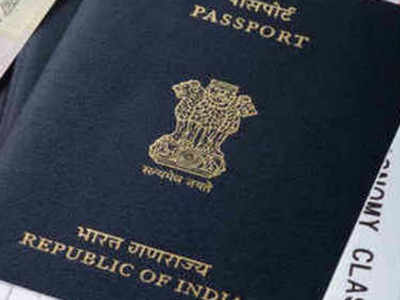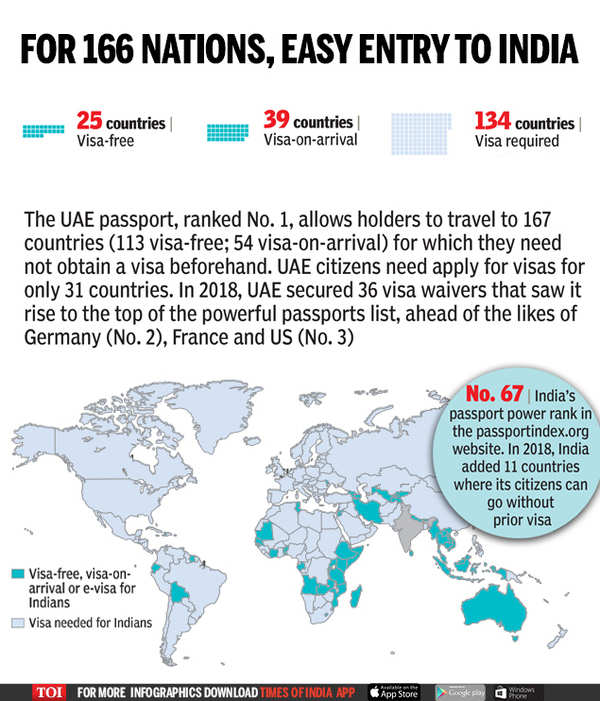- News
- India News
- Why more countries are welcoming Indian visitors
Trending
This story is from February 20, 2019
Why more countries are welcoming Indian visitors
The Indian passport has steadily strengthened over the past five years, jumping 10 ranks from 77 in 2015, to 67 in 2019. This year, while Indian tourists still need visas to enter 134 countries in the world, industry voices say more and more countries are opening up to Indian tourists, cognisant of their ability to spend as well as to return home.

File photo used for representation (Reuters)
Key Highlights
- Indian passport has strengthened over the past five years, jumping 10 ranks from 77 in 2015, to 67 in 2019
- Industry voices say more and more countries are opening up to Indian tourists
- Over 50 international tourism boards have set up their offices in India and work closely with tour operators
If you still haven’t zeroed in on the destination you’d like to explore when you head out this summer, remember this: Your Indian passport will grant you visa-free entry into 25 countries, and visa on arrival to 39 more nations across the globe.
The 2019 Passport Index, which ranks passports of 199 countries on the basis of their Visa-Free Scores and their ranking on the UNDP human development index, shows the Indian passport has steadily strengthened over the past five years, jumping 10 ranks from 77 in 2015, to 67 in 2019.It was 68 last year.
This year, while Indian tourists still need visas to enter 134 countries in the world, industry voices say more and more countries are opening up to Indian tourists, cognisant of their ability to spend as well as to return home. “One of the reasons for this improvement is that foreign governments don’t view Indian travellers with suspicion and welcome Indian tourists. They are of the opinion that Indians who come to their country do so for leisure or business and return home,” said Karan Anand, head of relationships, Cox & Kings Ltd.


Over 50 international tourism boards have set up their offices in India and work closely with tour operators and their governments to promote their destination in the Indian market. One of the factors that contributes to this growth, Anand said, is also the ease with which visas are issued. A small East European country like Azerbaijan, for instance, grants tourists visas to Indians in just three hours.
Even as Indians hope for increasing their global mobility, the Indian government has opened its arms to foreign tourists with increased vigour. The tourism ministry has extended e-tourist visa facilities to 166 countries, up from 46 nations in 2014, a decision that follows a series of amendments in India’s e-visa regime, liberalised to make the process more tourist friendly and double foreign tourist arrival figures by 2021.
Industry insiders, therefore, point to the need for greater reciprocity and emphasise the need for the Indian government to open diplomatic channels and push harder to make the Indian passport more noted and accepted.
If a comparison is between between India’s scores with that of Israel, Singapore, South Korea and United Arab Emirates, they say, India lags far behind. Sample this: people holding an Israeli passport have a visa-free score of 146 in comparison to India’s 64. In contrast, a South Korean or Singaporean passport will get its holder entry into 165 nations without a visa, or on a visa-on-arrival, while a UAE passport — the strongest in the World — will get its owner easy access to 168 countries across the globe.
The 2019 Passport Index, which ranks passports of 199 countries on the basis of their Visa-Free Scores and their ranking on the UNDP human development index, shows the Indian passport has steadily strengthened over the past five years, jumping 10 ranks from 77 in 2015, to 67 in 2019.It was 68 last year.
This year, while Indian tourists still need visas to enter 134 countries in the world, industry voices say more and more countries are opening up to Indian tourists, cognisant of their ability to spend as well as to return home. “One of the reasons for this improvement is that foreign governments don’t view Indian travellers with suspicion and welcome Indian tourists. They are of the opinion that Indians who come to their country do so for leisure or business and return home,” said Karan Anand, head of relationships, Cox & Kings Ltd.


Over 50 international tourism boards have set up their offices in India and work closely with tour operators and their governments to promote their destination in the Indian market. One of the factors that contributes to this growth, Anand said, is also the ease with which visas are issued. A small East European country like Azerbaijan, for instance, grants tourists visas to Indians in just three hours.
Even as Indians hope for increasing their global mobility, the Indian government has opened its arms to foreign tourists with increased vigour. The tourism ministry has extended e-tourist visa facilities to 166 countries, up from 46 nations in 2014, a decision that follows a series of amendments in India’s e-visa regime, liberalised to make the process more tourist friendly and double foreign tourist arrival figures by 2021.
Industry insiders, therefore, point to the need for greater reciprocity and emphasise the need for the Indian government to open diplomatic channels and push harder to make the Indian passport more noted and accepted.
If a comparison is between between India’s scores with that of Israel, Singapore, South Korea and United Arab Emirates, they say, India lags far behind. Sample this: people holding an Israeli passport have a visa-free score of 146 in comparison to India’s 64. In contrast, a South Korean or Singaporean passport will get its holder entry into 165 nations without a visa, or on a visa-on-arrival, while a UAE passport — the strongest in the World — will get its owner easy access to 168 countries across the globe.
End of Article
FOLLOW US ON SOCIAL MEDIA










